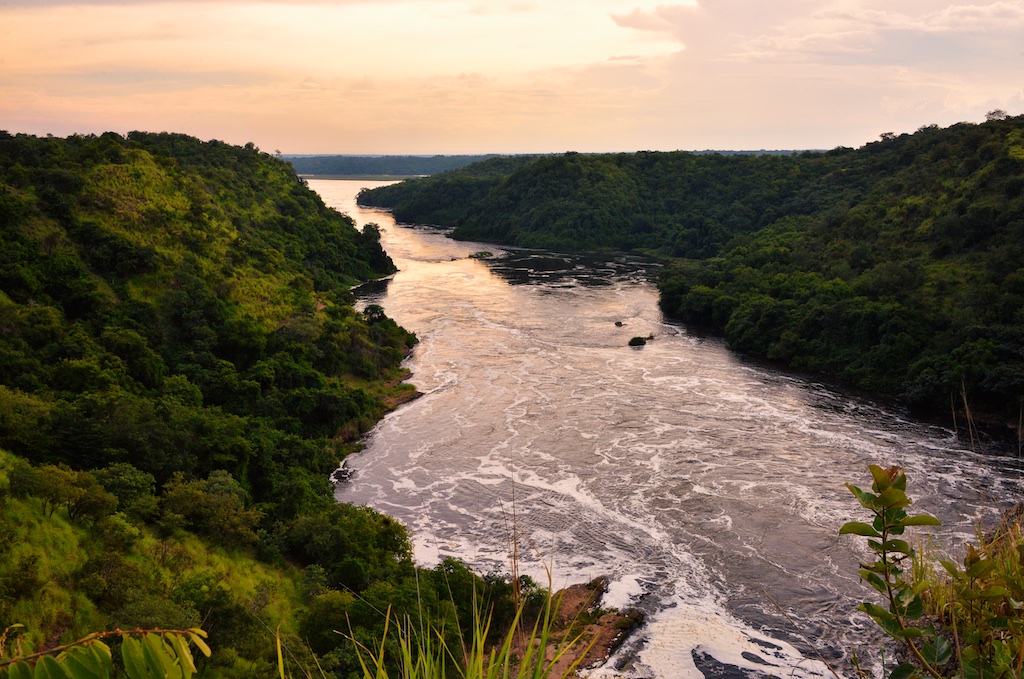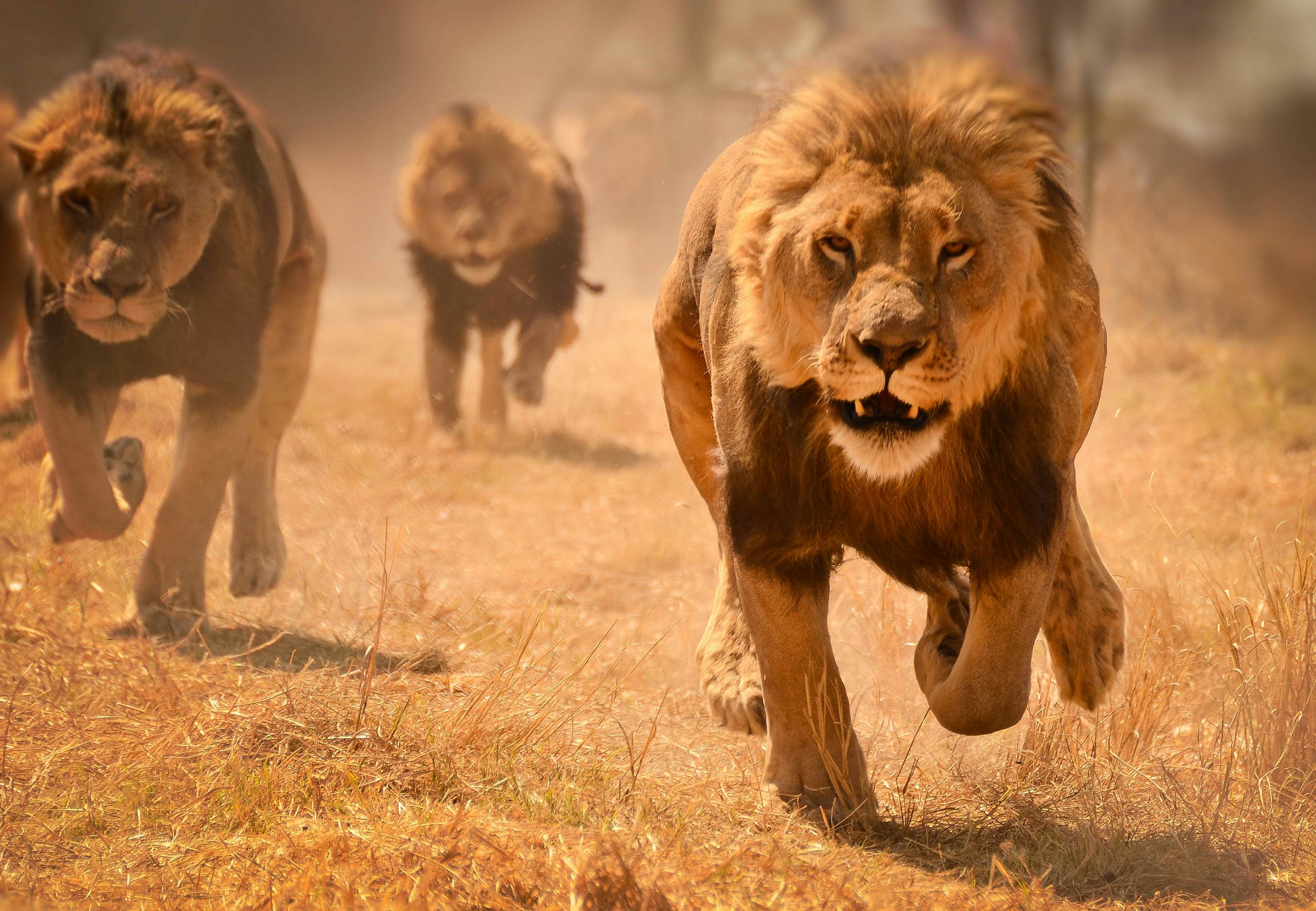The Peshtar are the first major race of Gal Hadre that I created that aren’t my take on a classic fantasy race. At their core, Peshtar are basically humanoid lions. I wanted something that a version of wasn’t going to be found in every other fantasy setting. Their lion background immediately gave several interesting things to explore.
They stand around human height, though tend to be slightly broader of shoulder, and be slightly stronger, along with weighing a bit more. They have fur and colourings similar to lions, and males have manes. They have very human-like hands with opposable thumbs and their bite is strong enough to severely injure an un-armoured humanoid. They have tails but their only significant use seems to be balance while they are moving at speed. Peshtar tend to only wear clothes for utility, so what they do wear has pouches, loops and other ways to store things or is protective, like armour or a blacksmith’s apron. They prefer to use Khopesh or curved swords and knives for melee, and either javelins or longbows for ranged combat.

Some fur colourings are considered particularly auspicious or damned. Most clans agree that white fur is a sign of divine favour, and fully white furred peshtar are generally prophets or oracles and learn to call upon the gods for their divine aid. Other rare fur colourings are considered cursed, and they are trained as assassins or for other high risk martial tasks. For those who have never fought Peshtar before these assassins come as a surprise, as they have none of the honour that most Peshtar fight with and frequently use poisoned weapons. The Peshtar have also over time developed potions and magic rites that provide significant benefits short term, but are either toxic or drain the life force of those they are applied to; for particularly important targets they will layer these onto an assassin, what do they care if one going on a suicide mission loses 20 years off the life they will never see. The thing that truly makes these dangerous, is that the assassins themselves believe in their curse and so show no hesitation during these highly dangerous missions.
The majority of Peshtar, even those who live in towns and cities are part of a clan. Each clan is led by an alpha pairing and anywhere from 50 to several hundred members, basically a massive extended family group. Individual Peshtari families sometimes live and travel separately from the clan, there are even entire clans that live spread out across a dozen to score of family farms. Clans, even urban ones strive to be as self-sufficient as possible, and have their own specialists in many areas including their own militias. The few cities with a majority Peshtar population are more like a series of villages that are immediately adjacent to one another rather than a unified city. In those cases the city leadership is usually a council of the alphas of all the clans. As a fiercely honourable people, betrayal can lead to centuries long blood feuds between different clans, in some extreme cases even other clans get drawn into these fights until one tribe is destroyed. This can become particularly dangerous if two clans that both live in the same town end up in a feud.
Faith and religion are important to Peshtar, and all but the smallest clans have at least one priest, prophet or oracle among their number. Religious rites are culturally part of many aspects of a Peshtari year, rites at the change of seasons, others when the clan moves camp and yet more if a clan goes to war. Some, more important rites, can only be performed by a priest but many lesser ones can be performed by any Peshtar adult. Most clans put great stock in signs, prophecy and divinations. This makes the path of the worldwind the most popular of the dragon magic paths. Many clans would willingly send warriors to support someone on the rumour that they are fighting dragonblooded or dragon cults.
Pathad is the homeland of the Peshtar, though it also has a large human population. Well above a majority of Peshtar live in Pathad, and most that don’t live close enough that they could easily travel back to Pathad when they wish. There are a few clans that live in far away places, including claims that there are a couple of clans in the untamed western wilds. Because of the significant numbers of both humans and Peshtar, leadership of the kingdom has traditionally been divided between a hereditary human monarch and Peshtar vizer.

The Peshtar are often a nomadic people, many clans travel several times each year establishing semi-permanent camps while their herds graze nearby. Unlike many nomadic people, the Peshtar are not fond of using mounts, and horses especially are unnerved by them. As a result of their traditionally nomadic ways and honour, Peshtar can nearly always expect to receive one night’s rest in the camp of any other clan unless there is a blood feud between them.
Peshtar have domesticated lions, and use them for the same purposes as humans do with dogs. Domesticated lions are smaller but faster than wild lions and can remain active for a larger portion of the day. They generally live within a clan as a single pride of lions and often work together to bring down game or foes. Being tracked by Peshtar hunters would be bad, also having a pair of their lions chasing you would be extra bad.

This is the second last major race for Gal Hadre, the last one we have to look at will be the undead Vrak, where among other things I will mention the various theories around how/why they get created. After that the Gal Hadre blog posts will probably move into a combination of looking at various parts of Gal Hadre, and some initial posts on the related RPG I have written. Let me know what aspect of Peshtar you find most interesting.
Comments
Post a Comment